Score breakdown
Things we like
- Successfully feels like a Peugeot
- Great to drive
- Refined and quiet
Not so much
- Relatively high prrice
- Limited safety spec
- Dodgy reversing camera
After a bit of will-they-won’t-they – Peugeot is big on the straight-bat approach to questions about new product – the local arm settled on the E-2008 to spearhead its push into electrification.
Peugeot isn’t necessarily a brand you associate with cutting-edge innovation. All the cool stuff in a Pug happens down below, with clever chassis solutions and (mostly) excellent ride and handling. (I speak as an owner of a 25-year-old Peugeot 306 that is remarkably reliable and conservatively engineered but drives beautifully. Still.)
The 2008, despite being a compact SUV, manages quite well to be a proper Peugeot. It’s fun to drive, interesting to look at and comes with that long-established pedigree but without that tinge of “that’s not a bug, it’s a feature” from its owners.
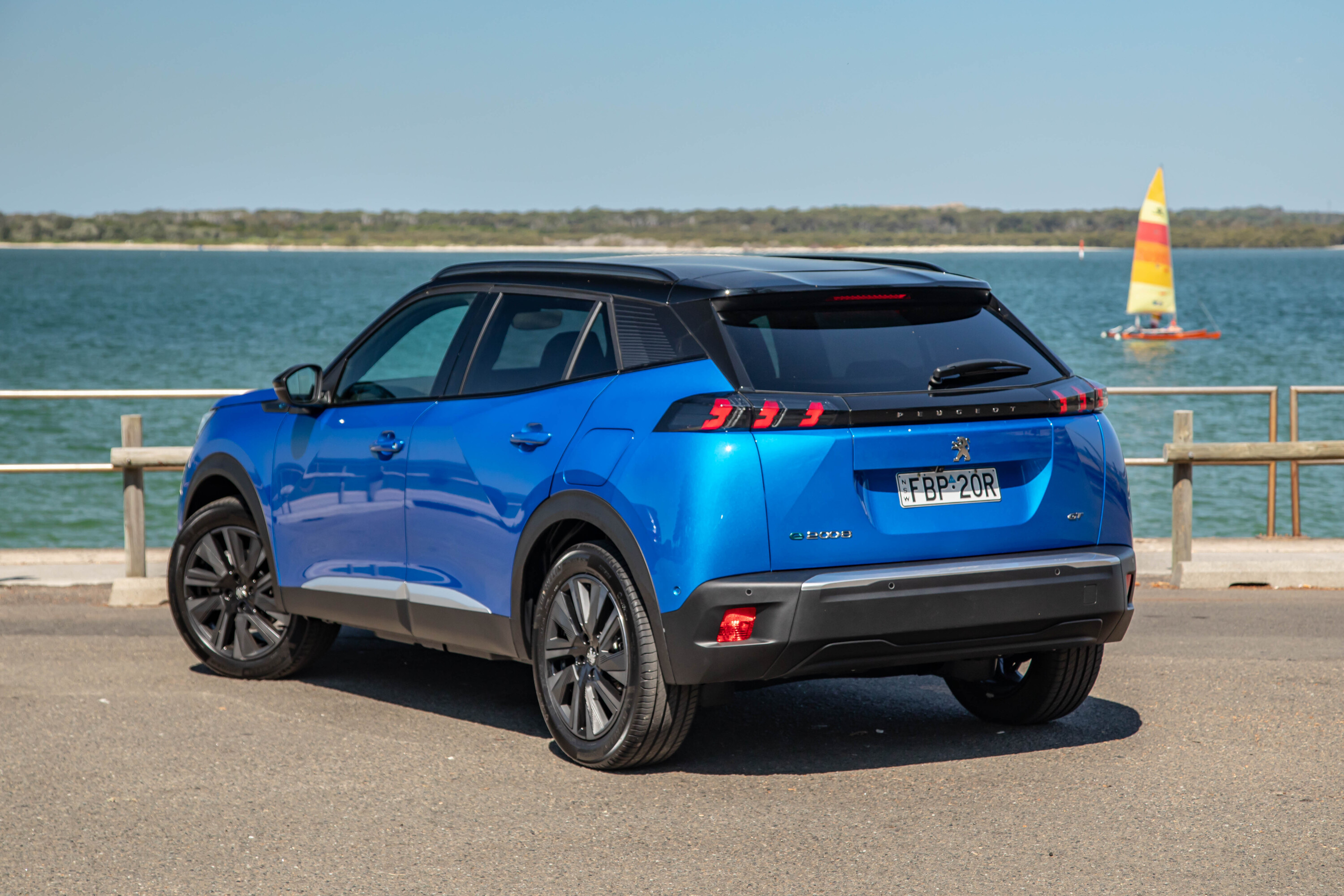
JUMP AHEAD
- How much is it, and what do you get?
- How do rivals compare on value?
- Interior comfort, space and storage
- Battery and charging
- What is it like to drive?
- How is it on energy?
- Warranty and running costs
- VERDICT
- Specifications
How much is it, and what do you get?
Things look to have fallen apart on the starting line, however, as the E-2008 is priced at a hefty $59,990 before on-road costs.
Peugeot doesn’t pretend to be anything but an upmarket brand in Australia, with the 308 GT PHEV clocking in at a whopping $64,900 excluding on-road costs, so it’s with a small amount of relief I tell you the E-2008 is cheaper than that. But sixty large ($59,990, or about $65K drive-away) places it very close to serious competition.
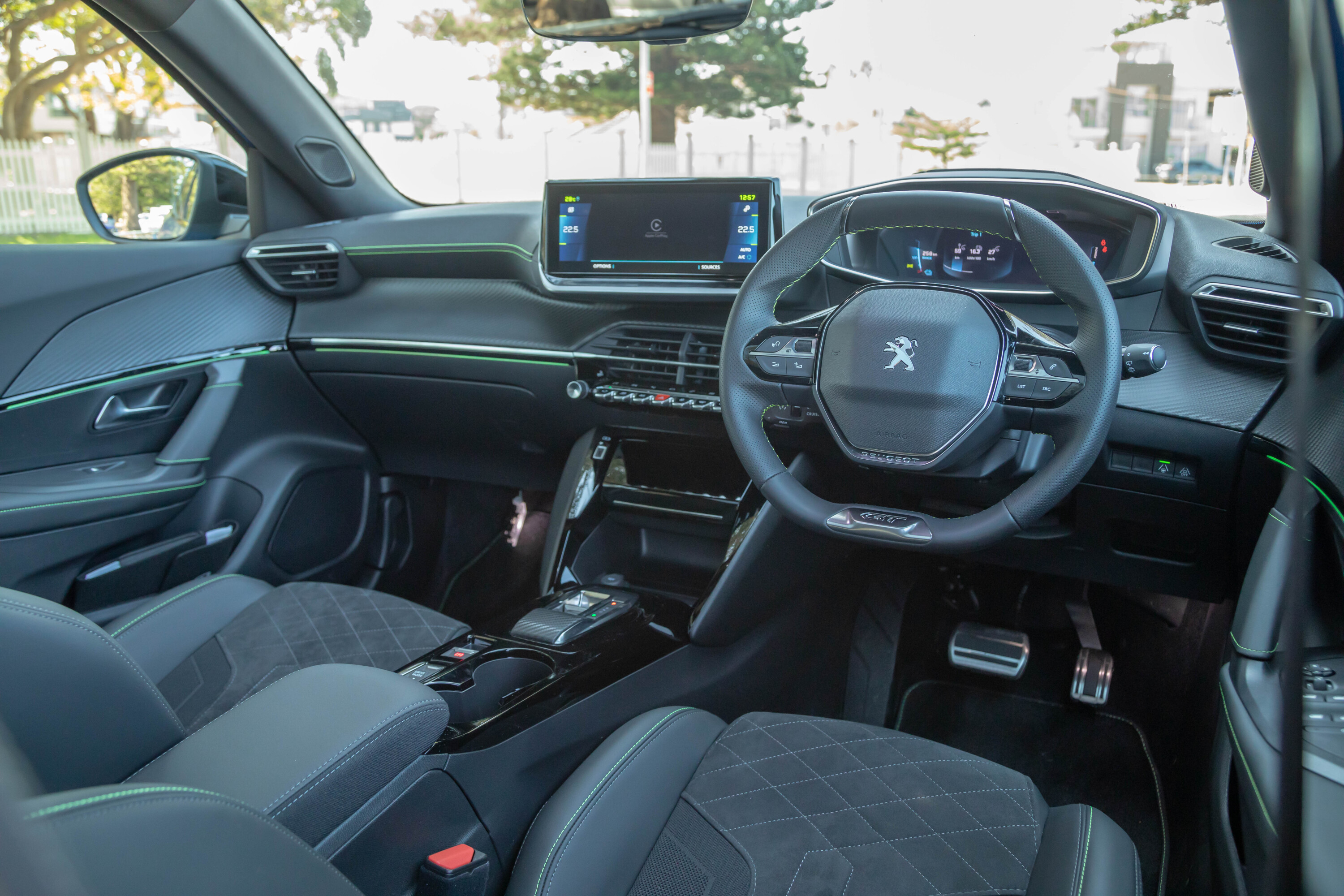
| 2023 Peugeot E-2008 standard features | |
|---|---|
| 18-inch alloy wheels | 6-speaker sound system |
| Adaptive auto LED headlights | Auto high beam |
| Auto wipers | 10-inch digital dashboard with 3D effect |
| 10-inch touchscreen | Wired Apple CarPlay |
| Wired Android Auto | Satellite navigation |
| DAB+ digital radio | Dual-zone climate control |
| Heated front seats | Power front-seat adjustmenr |
| Keyless entry and start | Tyre repair kit |
| Climate control | Driver’s seat massage function |
It’s not a lavish spec, but few EVs have that, going for a restrained list of features ostensibly to keep the price down. Sadly the price down bit seems to have been lost here.
Having said that, the interior looks and feels tech-heavy with that clever dashboard and genuinely interesting design.
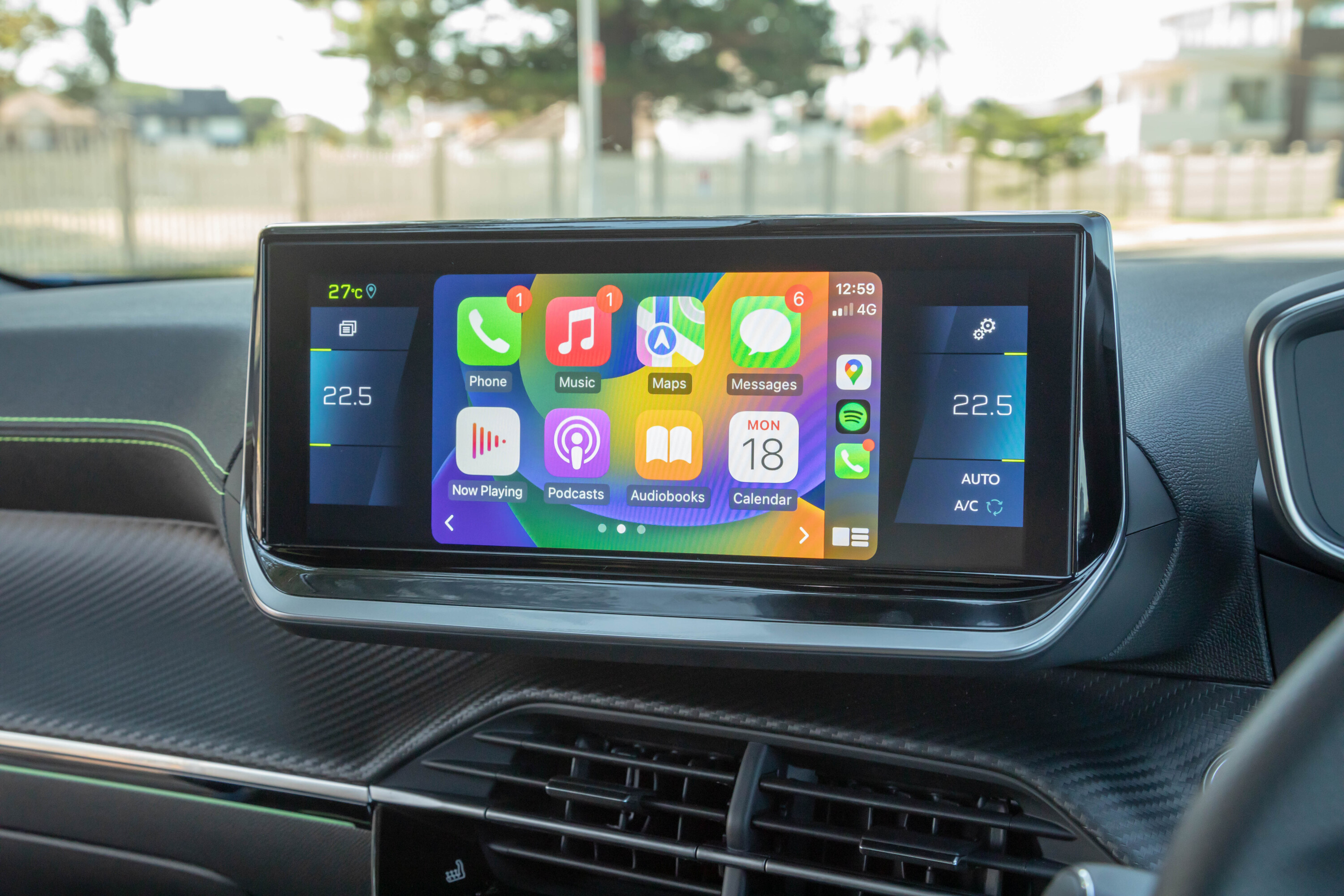
How do rivals compare on value?
You can spend a bit less or a bit more to get an EV with a similar driving range – if not similar size – to the E-2008.
Starting at under $40,000 before on-road costs is the MG4 55 Excite. While it’s not strictly a compact SUV it has similar interior space and sort of looks like one. It’s got a lot less standard kit but it’s also twenty grand cheaper.
In the mid-to-late-$40Ks is the BYD Atto 3. It’s more like the E-2008 although its inventive interior is not as convincing as the Peugeot’s.
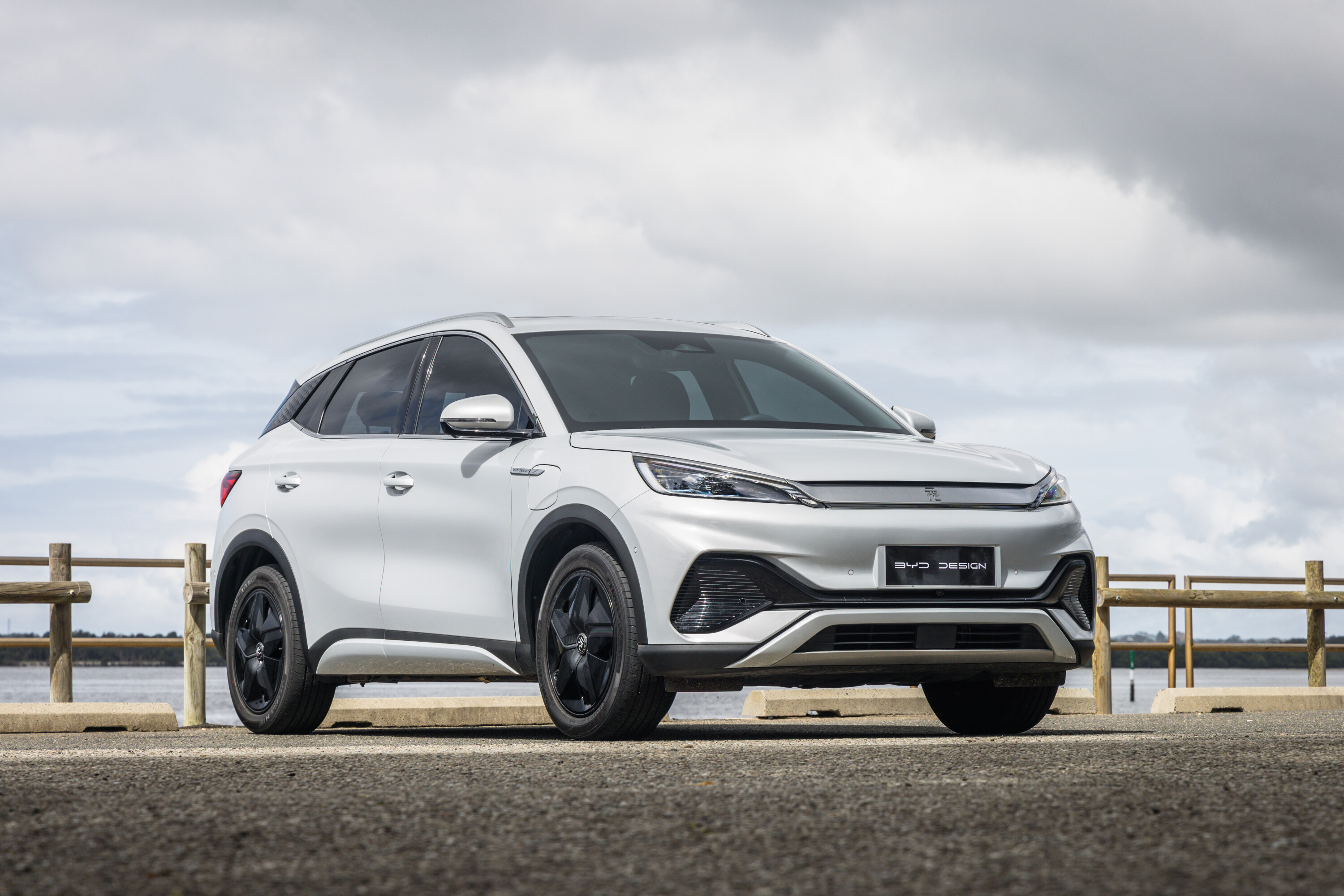
Spend a bit more than sixty grand and you have the choice of the perennial EV fan favourite, the Tesla Model 3 in rear-wheel drive form for $61,900 before on-road costs but you’ll be waiting a few months for the facelifted version that still doesn’t have a proper dashboard. Its claimed range of 513km is probably closer to 450km in reality but if the open road beckons, you should probably look here.
Or at the just-updated MY24 Polestar 2. The entry-level 505km WLTP-ranged rear-wheel drive version is now $67,400 plus on-road costs, with deals going on MY23 cars you can drive away straight away.

There’s the BYD Dolphin, too, at a hundred fewer bucks less than the MG but like the GWM Ora, probably not one you’ll cross-shop with the E-2008.
States are busy backing away from their EV incentives, so these prices represent what you’ll actually be paying in NSW from January and now in Victoria. It’s not as hard a blow if the NSW government uses the money to build charging stations, but don’t hold your breath.
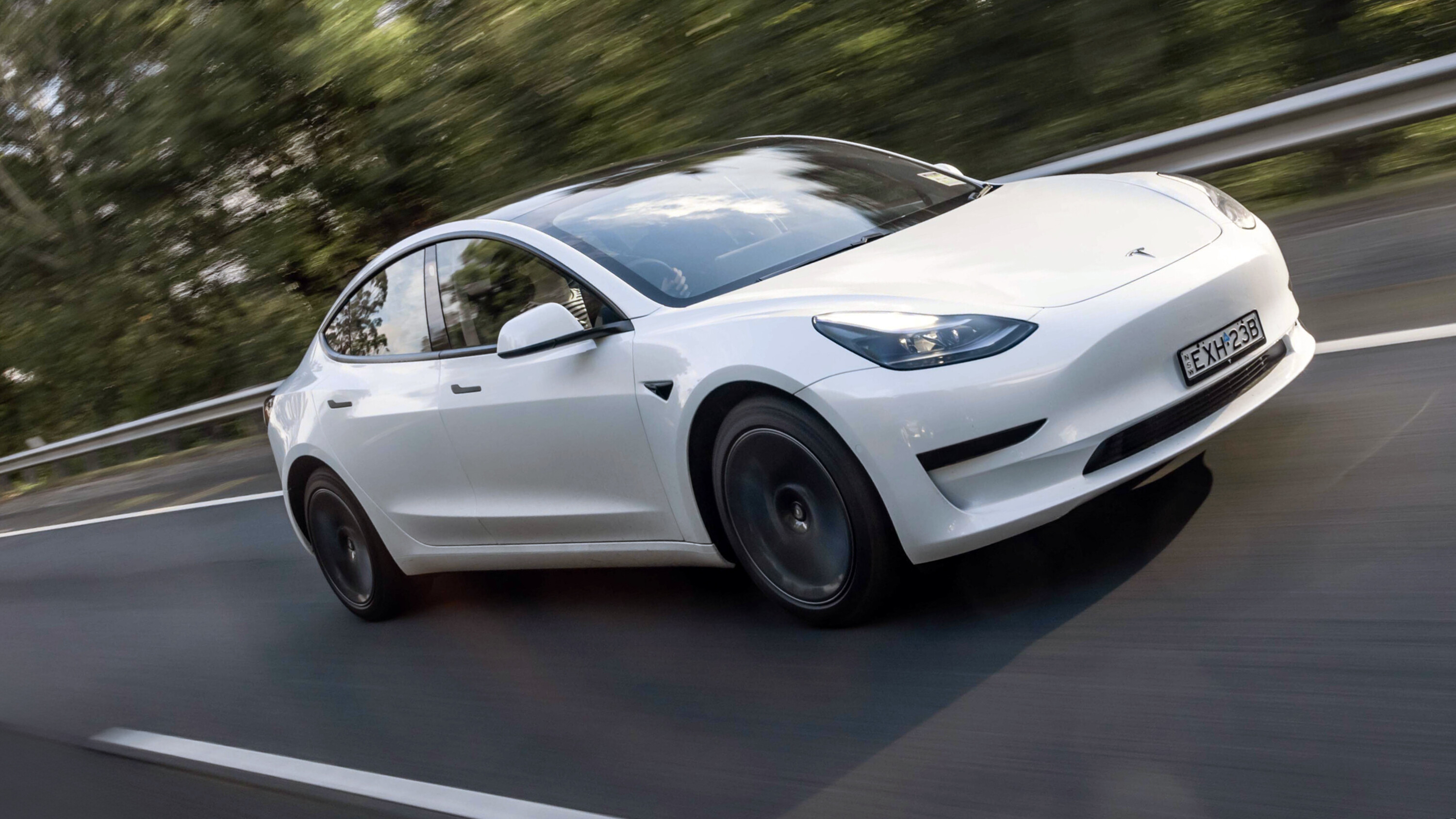
Interior comfort, space and storage
One of the great things about Peugeot is the inventive yet usable approach to interiors.
They look great and are awesome places to spend time. While things look a bit whack-a-doo – and the driving position remains an acquired taste – there’s no denying a genuine design flair across the range.
Peugeot’s weird driving position does work well in the 2008, as it does in the larger 3008/5008 pair. A more upright SUV stance is probably the key here, although the wheel still feels a bit low in your lap. The 3D-effect digital dash is great once you’re used to it; the way it brings pertinent information to the foreground is very phone-like and I dig it.
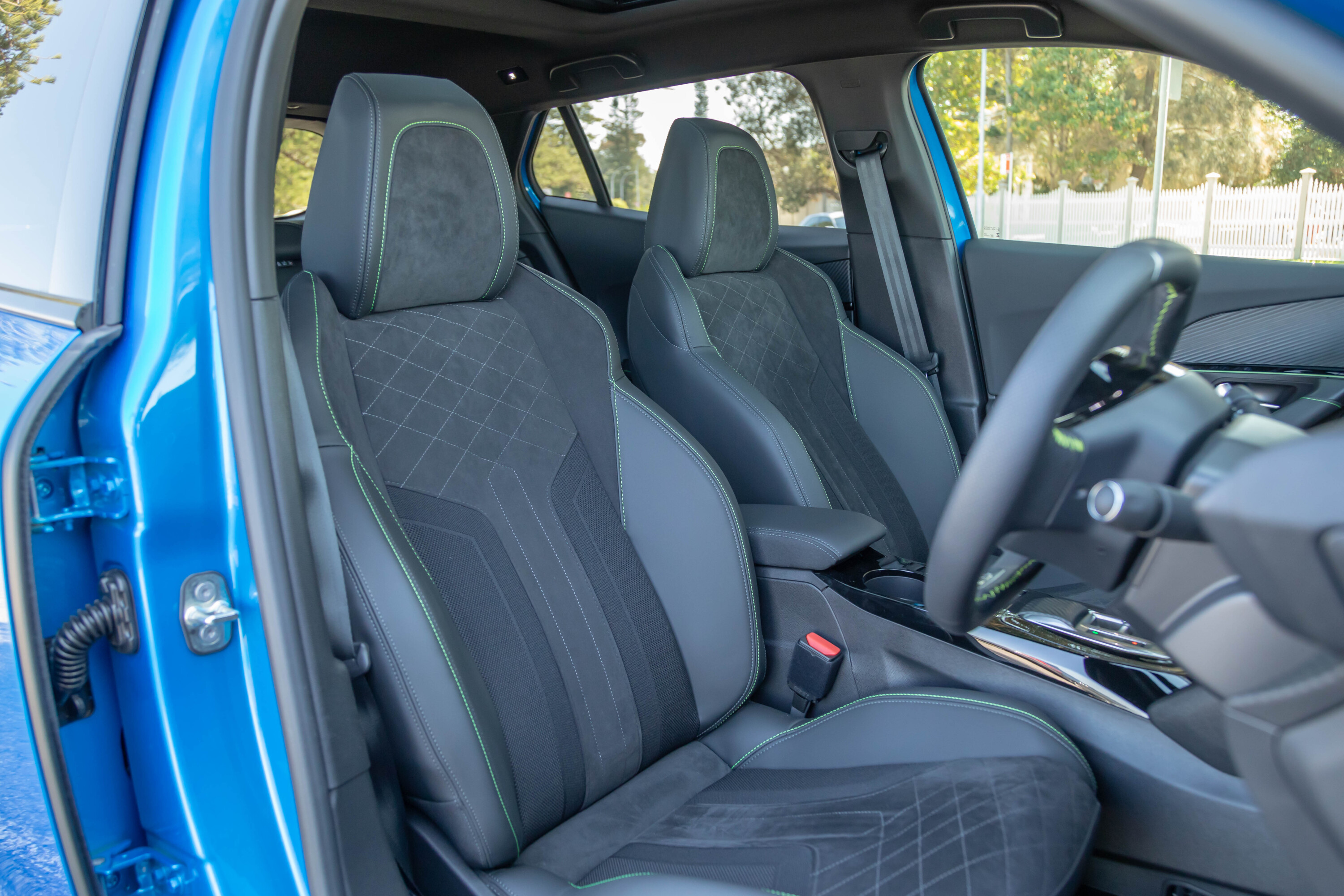
The front seats are great, too, with a mix of leather (probably fake) and Alcantara. They’re as comfortable as they are good-looking and even have a massage function that can ease tired backs and bums on a long drive. Which, let’s be honest, isn’t going to happen very often with a 300km range.
You have a 10-inch touchscreen as well, which is a nice installation but still a bit finicky to use. The range of shortcut buttons underneath (and a proper volume dial) take the sting out of that laggy hardware but dead set, the reversing camera is hopelessly grainy and blocky.
A pair of cup holders, a wireless phone charging pad and a weird openable tray under the aircon are all present and correct on a spacious console that features a VW Golf-style toggle switch (or, as I prefer, toddler’s tongue) to clean up the space.
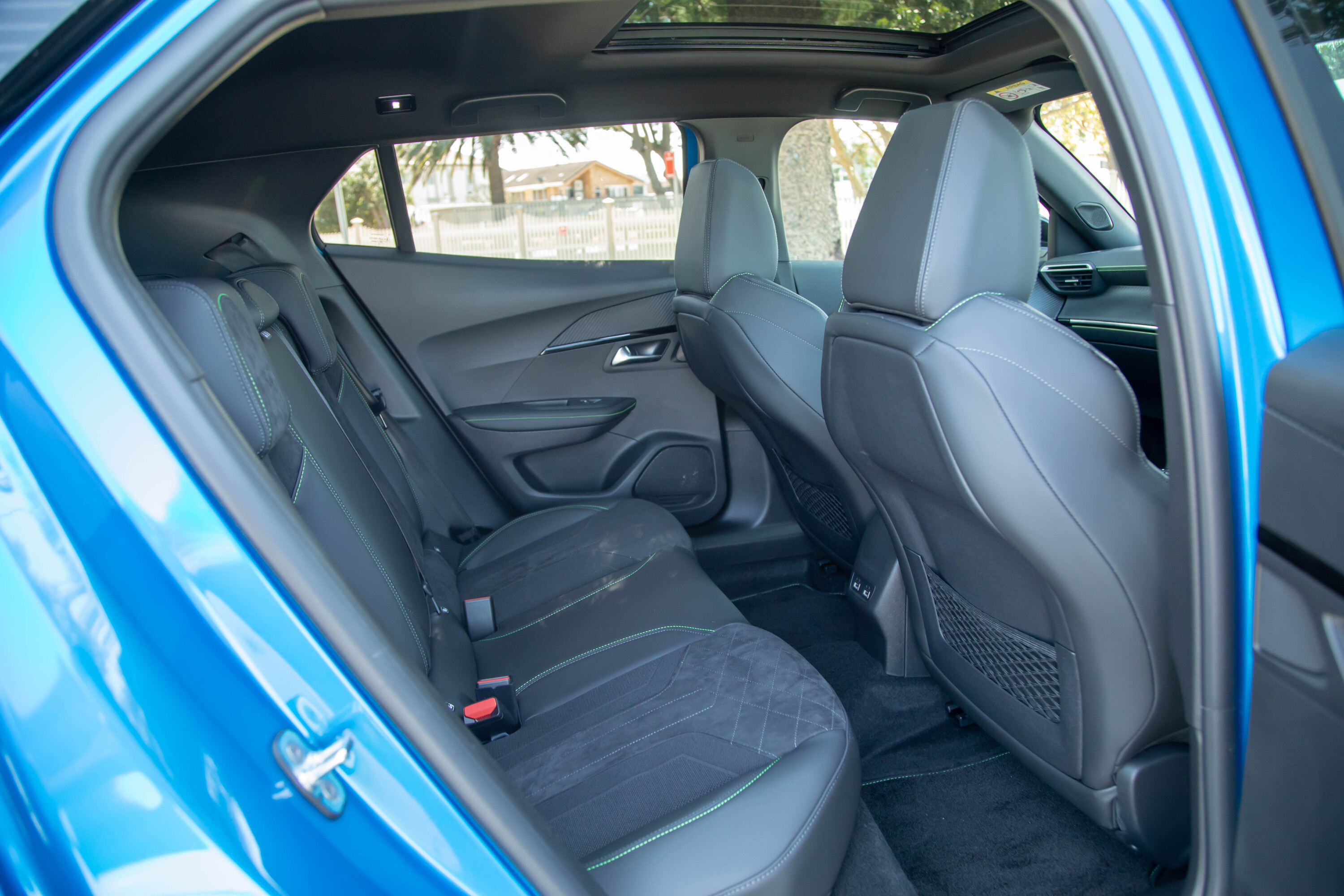
To connect your phone, there’s a USB-A port and a USB-C charging port on either side of the console. At the rear of the console is a lidded bin doubling as an elbow rest.
Rear seats are similarly plushly covered in Alcantara and leather. Leg and knee room is acceptable for me behind my driving position. At 180cm I’m not a skyscraper but not short either. Three across will be a challenge because of the surprisingly big transmission tunnel that points to the ICE platform origins.
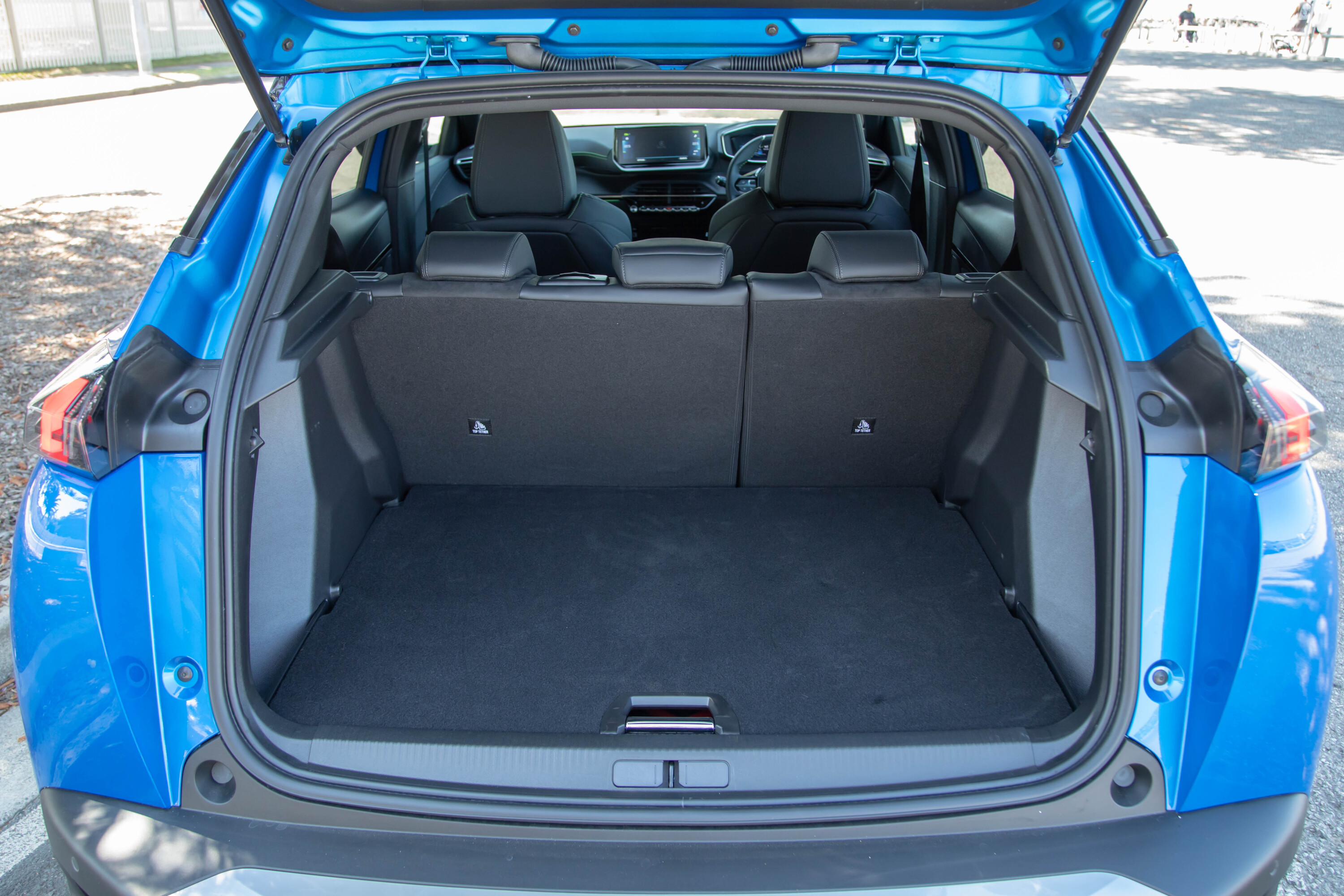
There aren’t any air vents back here, nor is there an armrest or cup holders, so it’s a bit, er, economical. You can squeeze a bottle in the doors though. The seats themselves are comfortable and there’s good headroom, however, the headrests are a bit ho-hum and the windows high and slim. There are two USB ports, though.
In what appears to be good news, the petrol and electric 2008s share the same boot capacity – 434 litres with the seats up and 1467 with them down. On their own, that’s a pretty good deal in this segment. The E-2008, however, misses out on a spare tyre to bridge that gap.
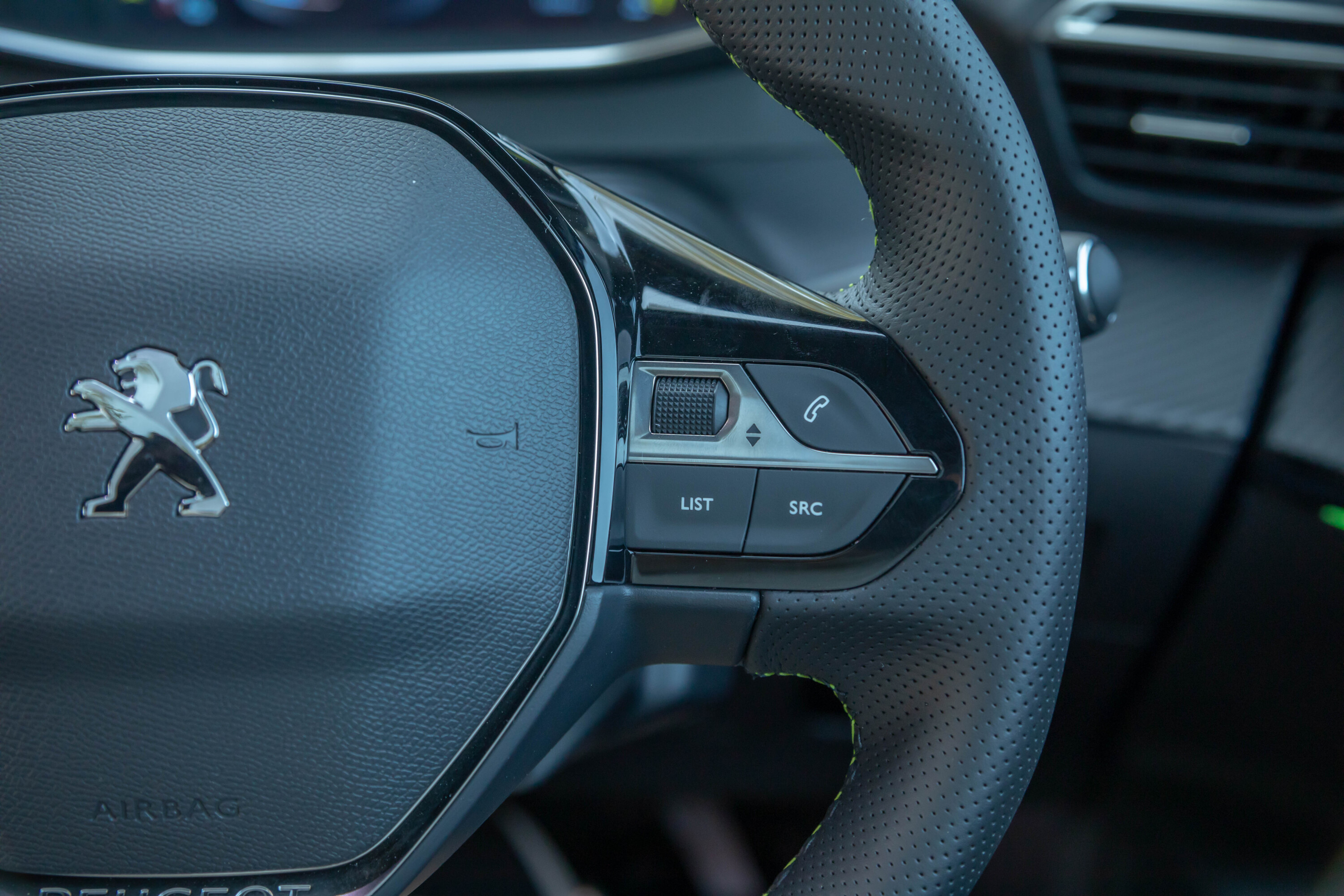
Battery and charging
The E-2008 ships with a 50kWh lithium-ion battery pack that has a 400-volt architecture.
A Type 2 CCS with DC plug fits in the rear left quarter panel which is fairly convenient as long as you’re happy to back into the space.
Peugeot quotes a maximum charge rate of 100kW, meaning you’re wasting your time looking for a faster and more expensive 350kW rapid charger. Charge time from 10 to 80 per cent is a claimed 30 minutes, which isn’t too bad. I plugged in for a brief squirt at a 50kW charger and it held full speed. You won’t always get that from a charger, but the E-2008 clearly works when full whack is available.
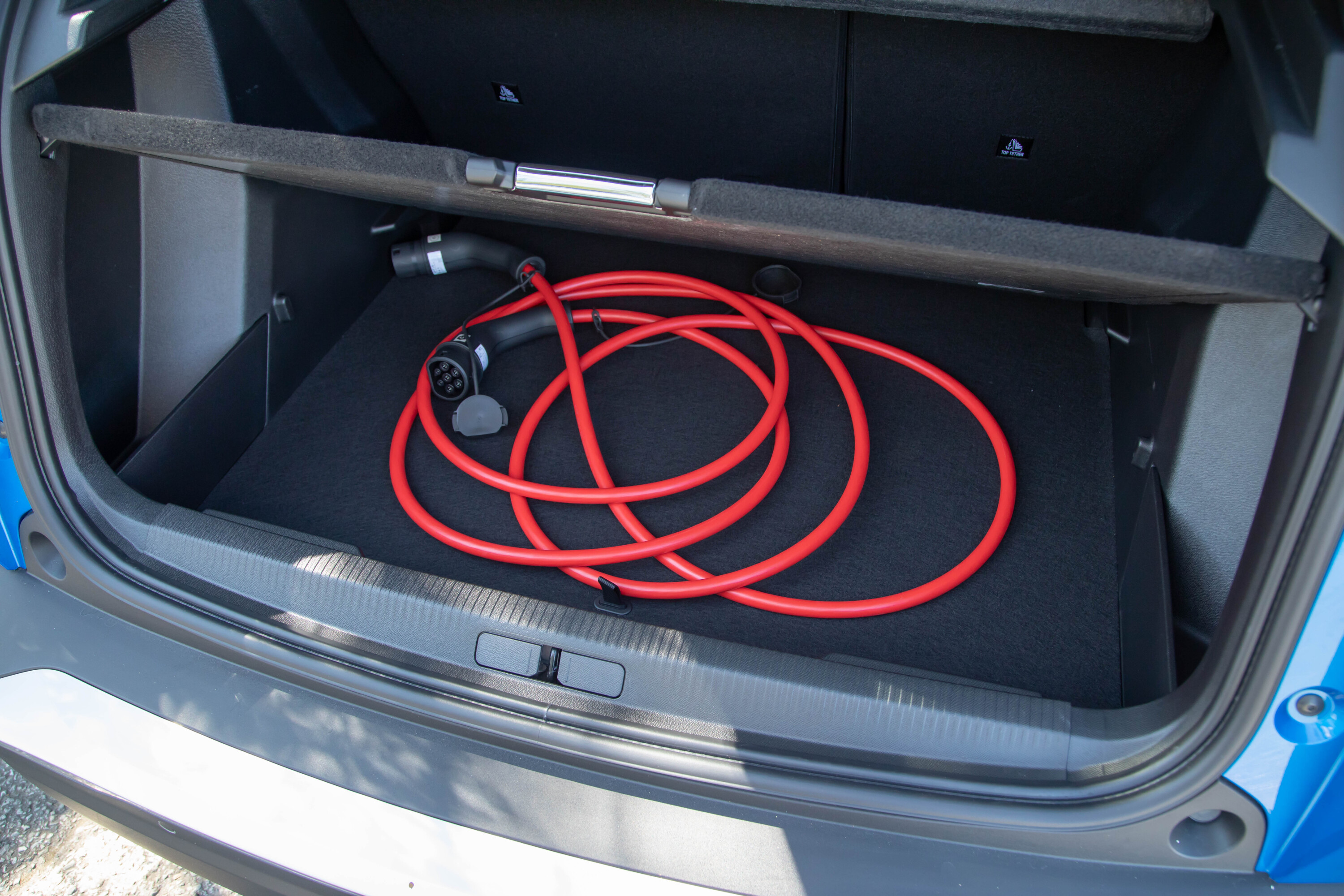
There’s a lot to be said for a city-bound EV having a sensibly-sized battery – the E-2008’s is comparable in size to the long-range Atto3 and base model MG4 – because short trips and short charges work well into the likely usage pattern, assuming charge station availability. Again, though, you expect a lower up-front price.
Charging at home is the usual slow affair, with around 16 to 24 hours for a full charge on the Type 3 cable hooked up to the mains or five hours if you have a wallbox.
| 2023 Peugeot E-2008 GT battery specifications | |
|---|---|
| Size | 50kWh |
| Chemistry | lithium-ion |
| Voltage | 400 volts |
| Mains charging (0-100) | 16.5 hours |
| Charging (AC) | up to 11kW |
| Charge time (0-100) | 5 hours |
| Charging (DC) | up to 100kW |
| Charge time (0-80) | 30 mins |
| Charge port | rear left quarter panel, CCS2 |
| V2L | no |
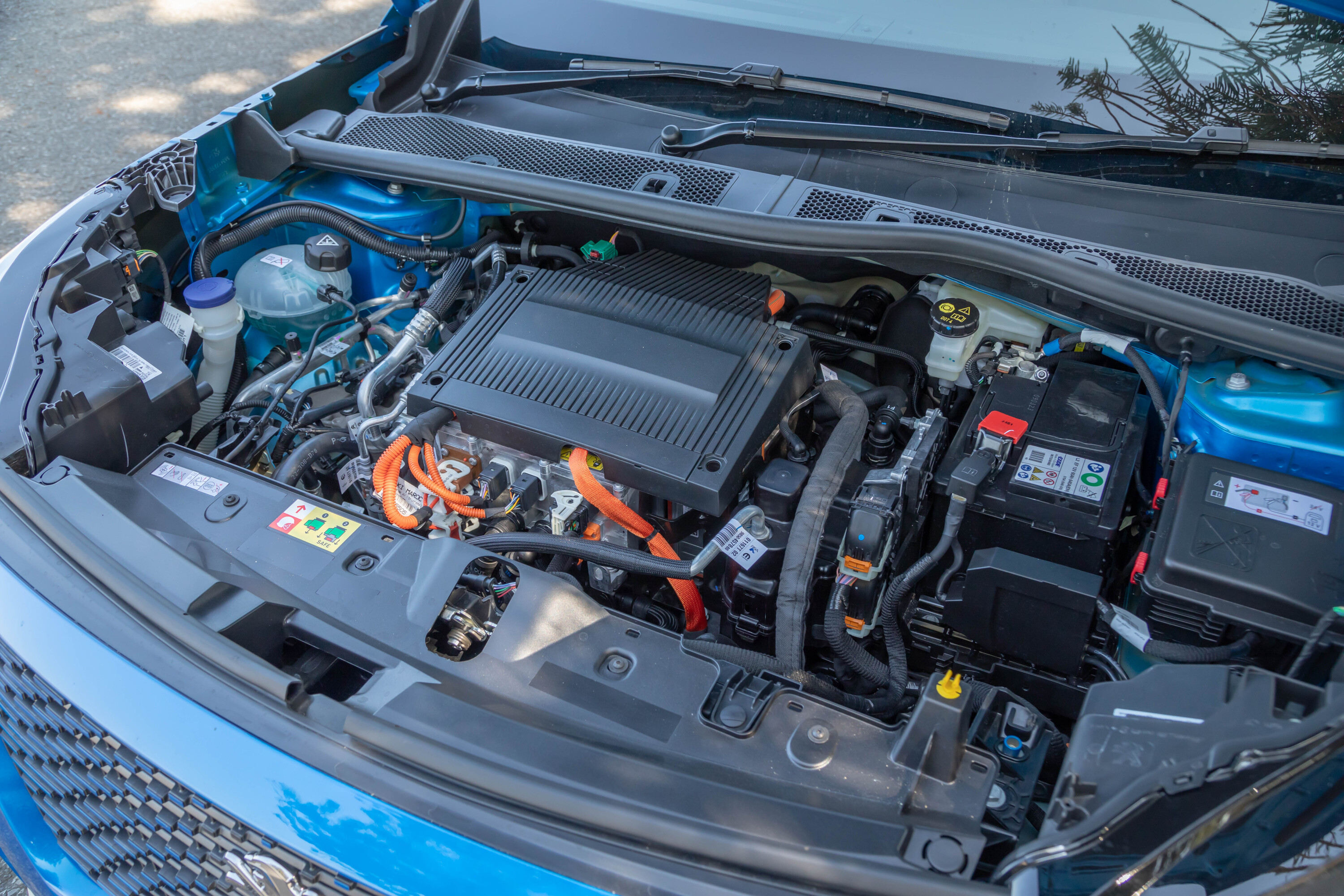
What is it like to drive?
One of the more tedious things about the perception of electric cars is that they’re all really fast and if they’re not, what’s the point?
Peugeots – unless wearing a GTI badge – have generally not been focused on outright speed. The home market is full of Pugs with tiny engines being rowed along enthusiastically at moderate speeds because that’s how things are in France. And so it is in the E-2008 with the slightly ambitious GT badge.
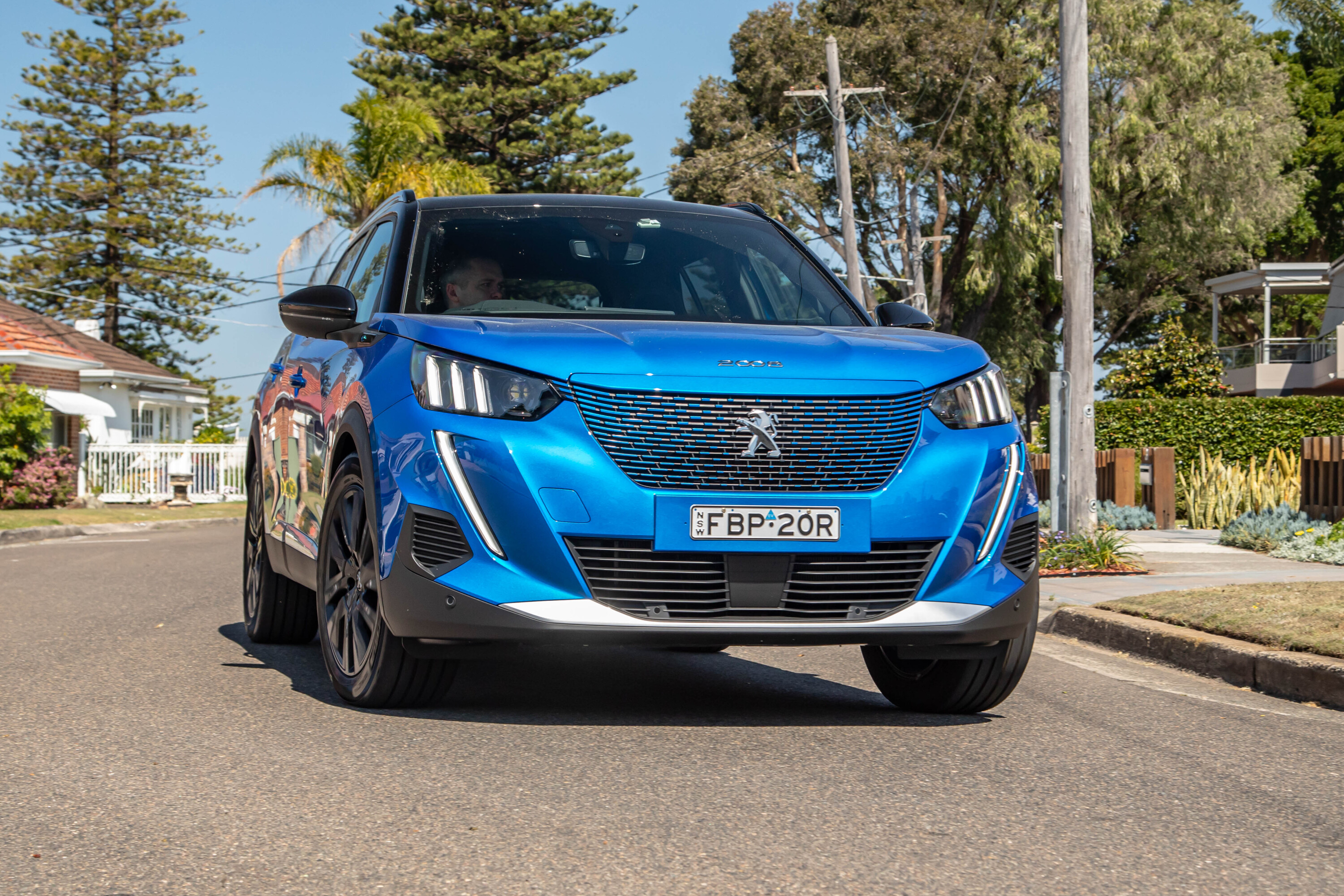
The GT badge might suggest warm hatchness, but that’s where you’d be wrong – it just means it’s based on the GT spec of the petrol range, and even then, they’re different anyway. Cheeringly, the base 2008 is good fun to drive, so we’re already in reasonable shape.
| 2023 Peugeot E-2008 GT drivetrain | |
|---|---|
| Power | 100kW |
| Torque | 260Nm |
| Drive | front-wheel |
| Gearbox | single-speed reduction gear |
As you can see, the power output of 100kW is quite modest, just four measly kilowatts up on the surprisingly characterful 1.2-litre three-cylinder. That engine is remarkable for its near-prodigious torque output of 230Nm.
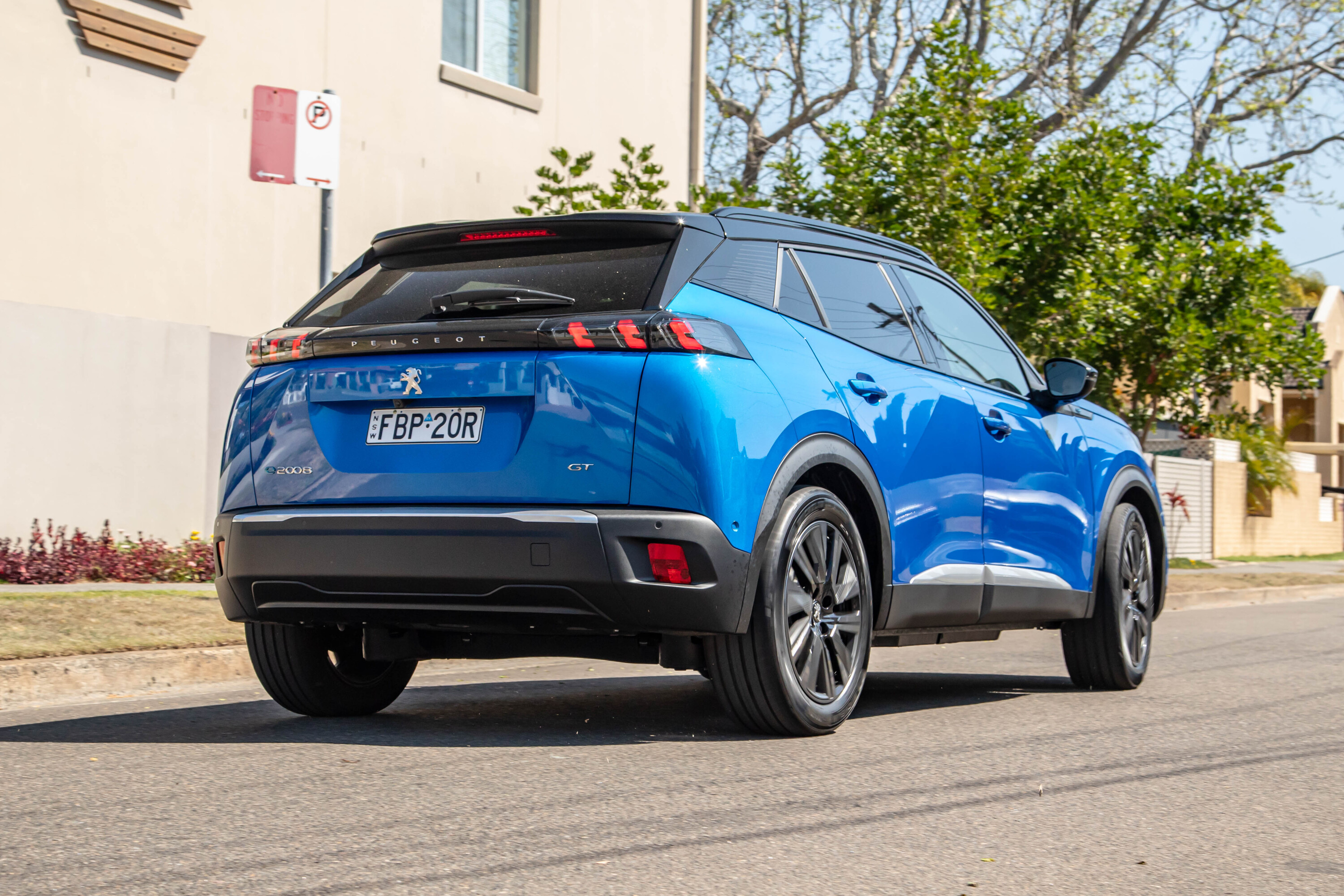
The E-2008 has to shift around 320kg more than the petrol-engined version. Somehow it’s three-tenths quicker to 100km/h at nine seconds but as you can see, that isn’t a stellar number. Which is fine.
What Peugeot has done, however, is what I expected – maintained a very pleasant ride and handling balance and managed to keep it fun, with one or two caveats. Obviously trying to hide 300-plus kilos is a bit of a task but it certainly doesn’t feel that much heavier.
You can hear the rubber working pretty hard in the corners when you lean on it, but given they’re pretty decent Michelin Primacy tyres, they hold on pretty well.

The more time I spent chucking the E-2008 at corners, the more I realised how quiet it is. Quieter than the MG4, quieter than the Atto3, Model 3 and Polestar 2. The tyres are part of that equation but even at highway speeds, just a gentle audible shimmy around the wing mirrors is the worst of it.
Like the petrol 2008, the chassis has a bit of sparkle to it. The small steering wheel makes the steering feel sharper and more direct than perhaps it is, but that feeling is always a bit of a laugh. Its change of direction is also impressive given the weight, just a little dull compared to the petrol.
It’s always tricky turning a petrol car electric and Peugeot has pulled it off. It will be interesting to see how the E-208 hatchback compares.
If any of the terms in this section have left you scratching your head, these articles will help bring you up to speed!
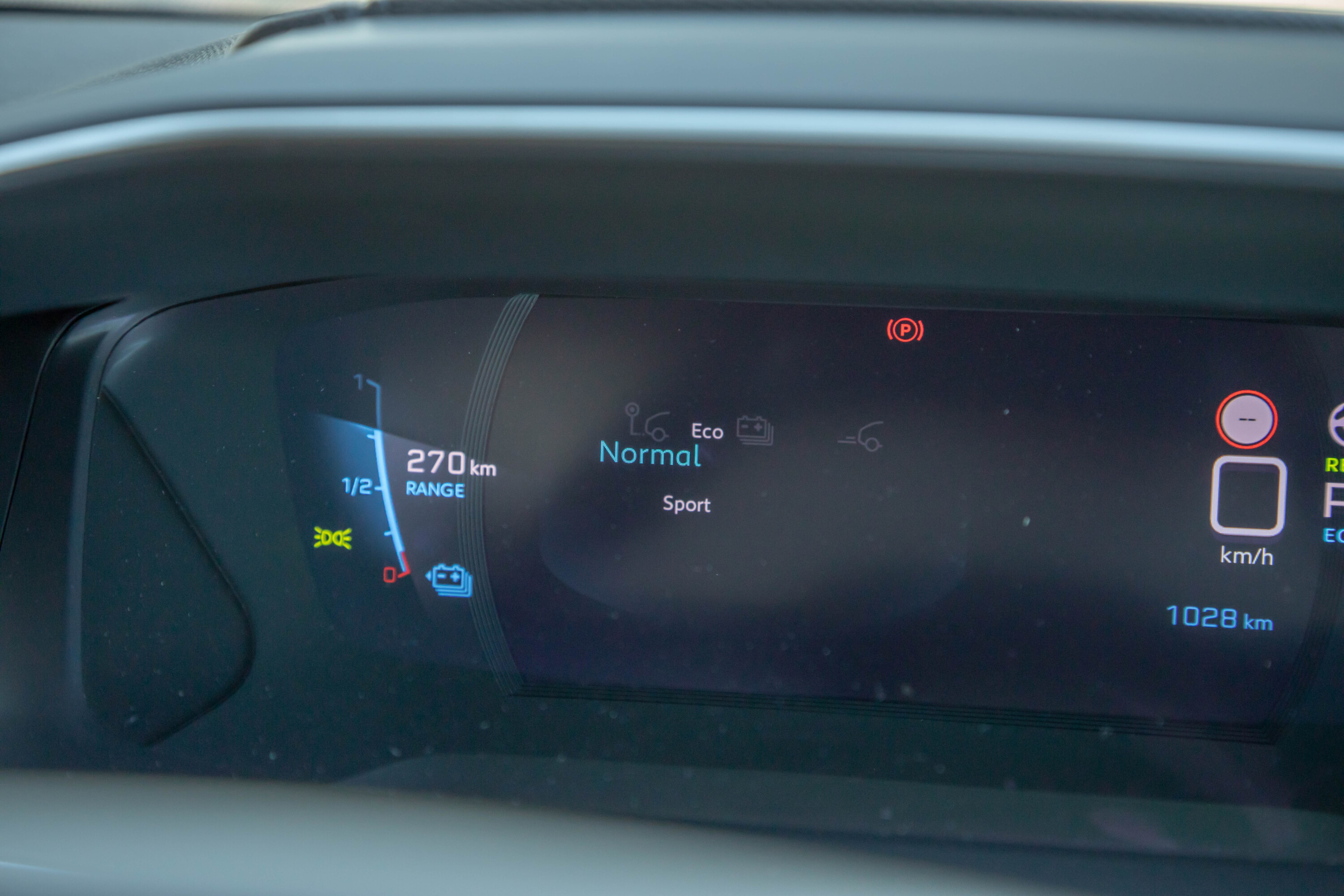
- What is a Powertrain or Drivetrain?
- Power vs torque
- Car suspension explained
- Automatic transmissions (‘gearboxes’) explained
- Chassis control systems explained
- Car vs Ute vs SUV: How the vehicle you buy should guide the way you drive
Despite a reasonable 2.5kWh difference from the WLTP, we got a pretty good result from the E-2008 for a couple of reasons.
First, the days I spent in the E-2008 were very hot, so the climate control went on and stayed on. Secondly, I had rather a lot of fun driving the E-2008 so there’s an easy kWh or more to be found if you’re not a perpetual adolescent like I am.
| 2023 Peugeot E-2008 GT efficiency | |
|---|---|
| Range (claimed, WLTP) | 328km |
| Consumption (claimed, WLTP) | 14.1kWh/100km |
| On test | 16.6kWh/100km |
| Real-world range | 280km |
No, 280km from 50kWh isn’t outstanding, but the E-2008 isn’t a slippery sucker given its tall SUV bearing. I think you could probably get quite close to the WLTP figure in gentle city driving, which is commendable.
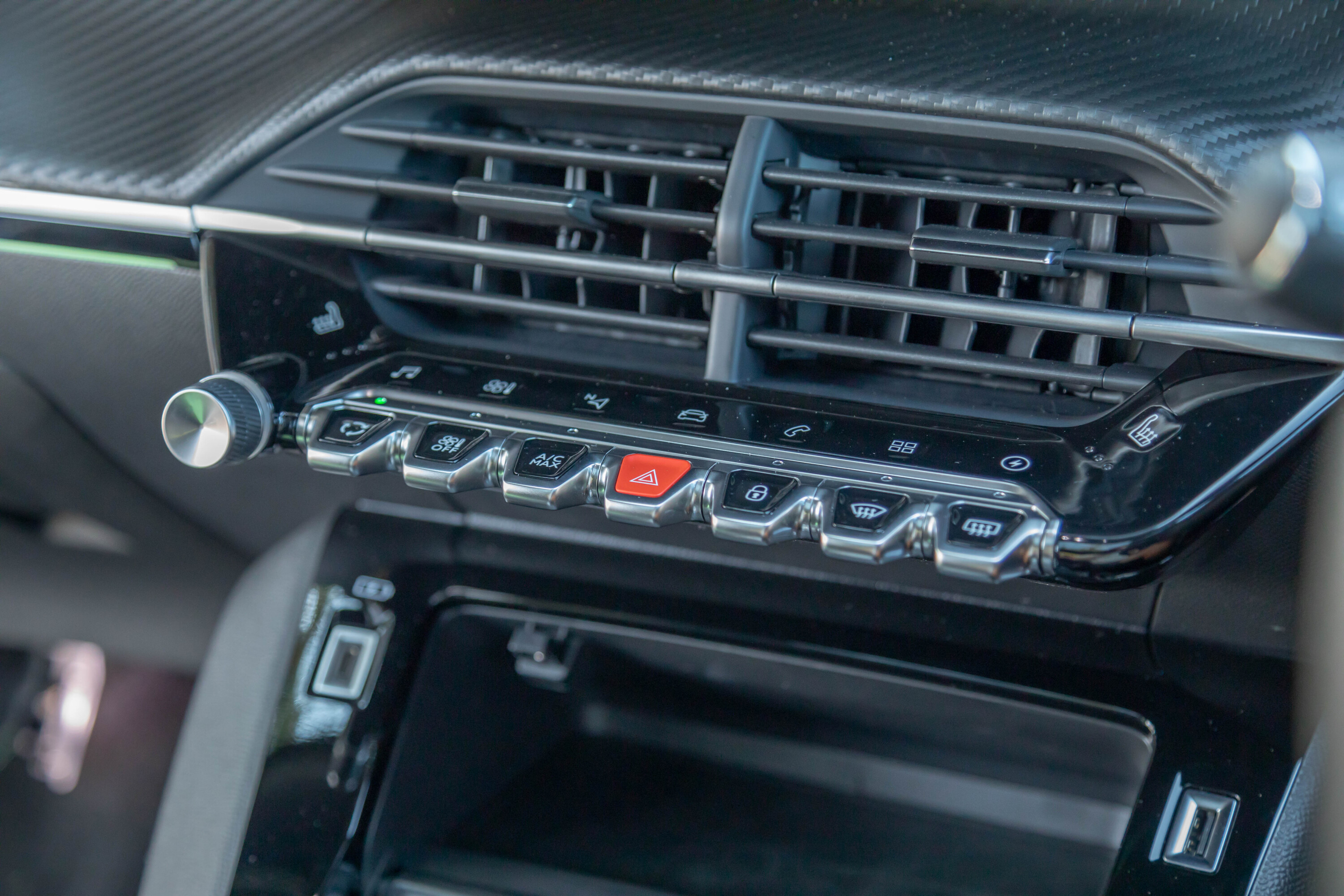
How safe is it?
As the E-2008 is quite new it doesn’t yet have an ANCAP safety rating.
The petrol version carries a five-star rating from 2019, though, which points to a) reasonable form and b) a likely four-star rating given the lack of front-centre airbag. But with ANCAP, you just never know.
| 2023 Peugeot E-2008 GT safety features | |
|---|---|
| Six airbags | Anti-lock brakes |
| Stability and traction controls | Forward auto emergency braking |
| Forward collision warning | Lane departure warning with road edge detection |
| Traffic sign recognition | Advanced driver attention alert |
| Lane trace assist | Blind-spot monitoring |
The forward AEB features low-light pedestrian and cyclist detection. Any car without reverse cross-traffic alert and/or reverse AEB earns my wrath and the E-2008 – frustratingly at this price – has neither. Rawr.
For child seats, there are two ISOFIX points and three top tether anchors.
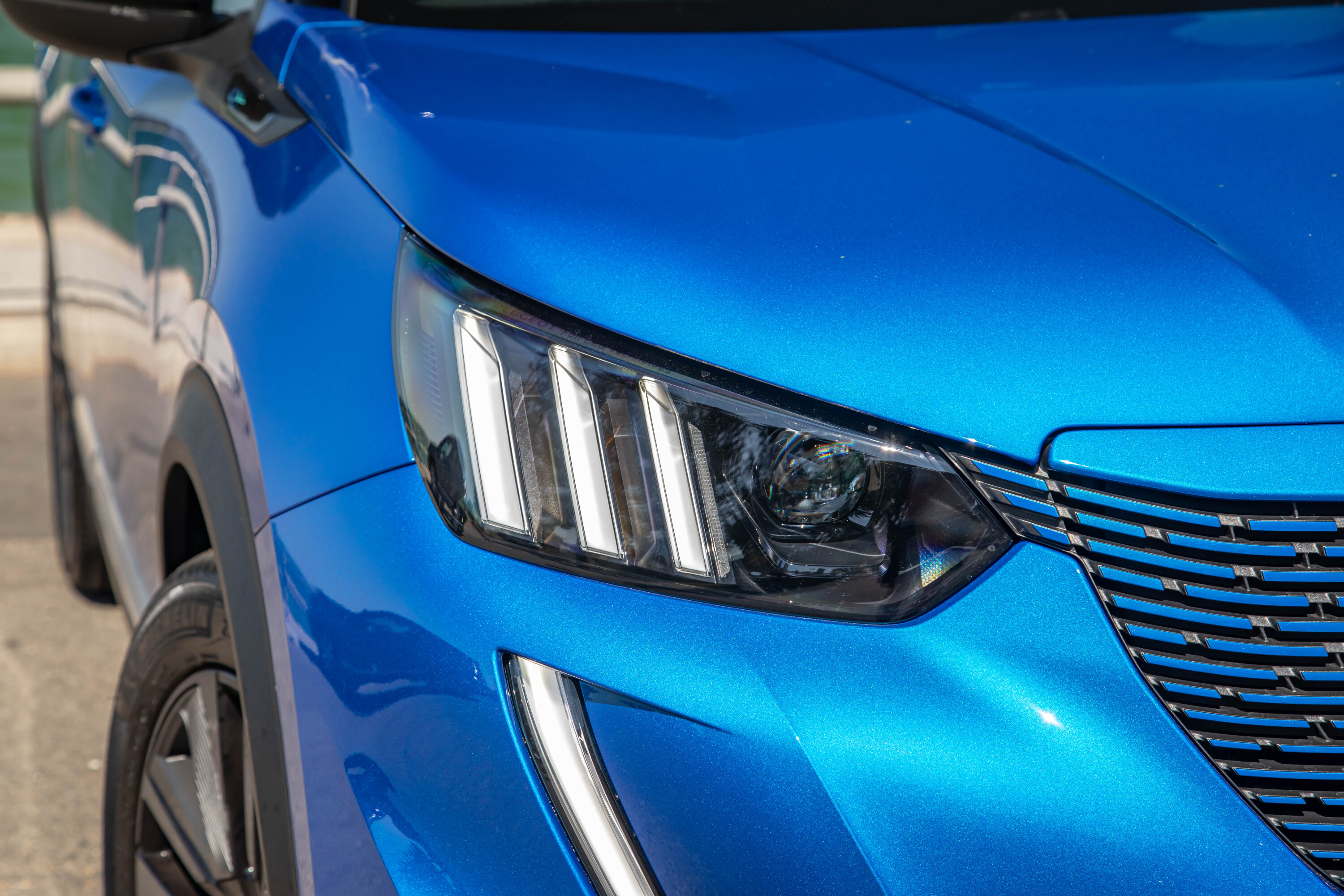
Warranty and running costs
Peugeot’s five-year/unlimited-kilometre warranty applies to the vehicle and an eight-year/160,000km warranty covers the battery.
Servicing an EV should be cheap and, as it turns out, it is. You only have to visit the dealer once every 12 months or 24,000km (whichever comes first) and pre-paid servicing costs just $600 (three years) or $1000 (five years), working out at an easy $200 per year.
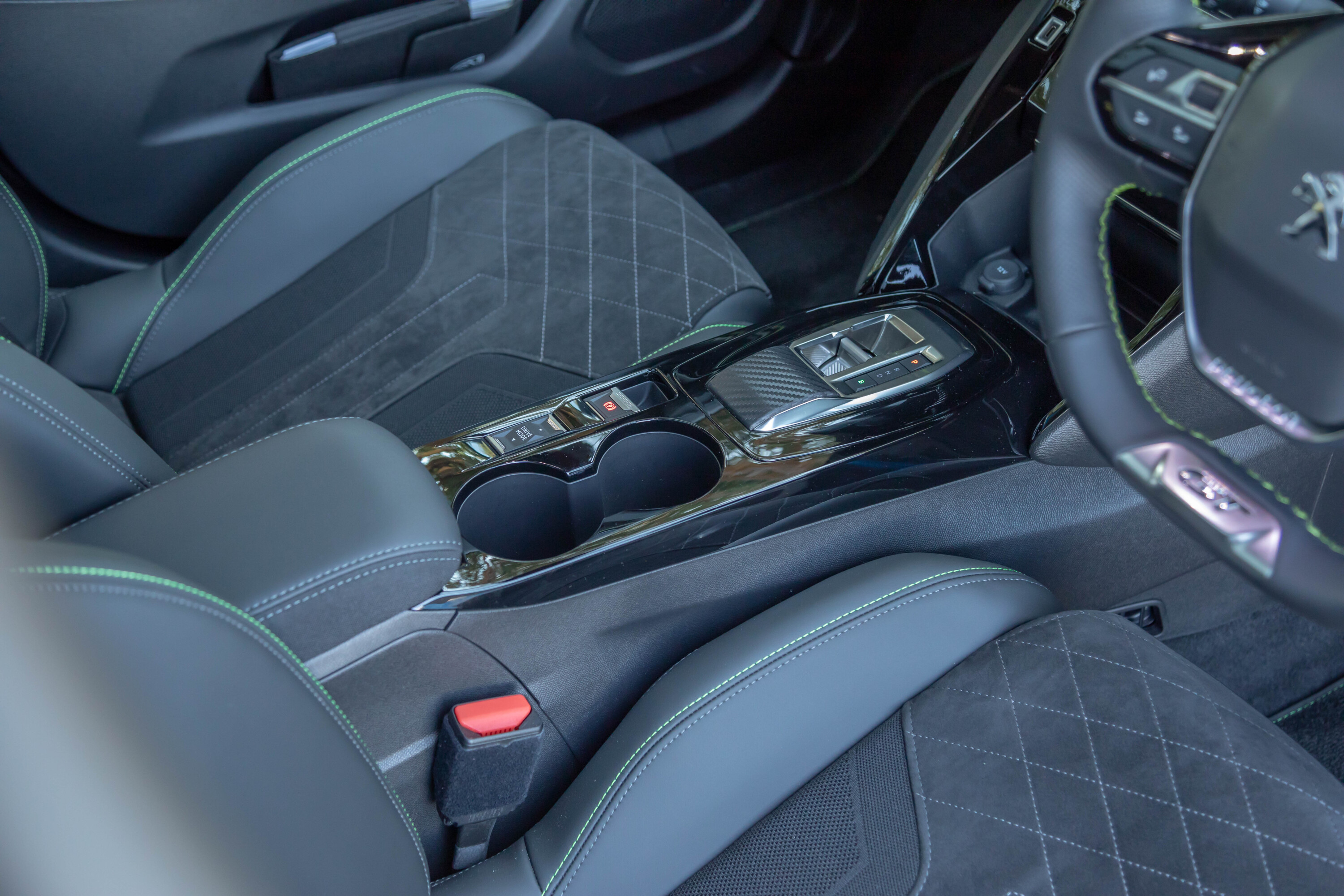
VERDICT
The only real problem with the E-2008 is the price. As an electrified compact SUV, it builds very nicely on the petrol versions, which are hardly cheap themselves given the Allure base model reaches well into the $40,000s.
The E-2008 looks great, is really nice to drive and should be as appealing as the petrol versions that aren’t anywhere nearly as well-regarded in this market as they could be.
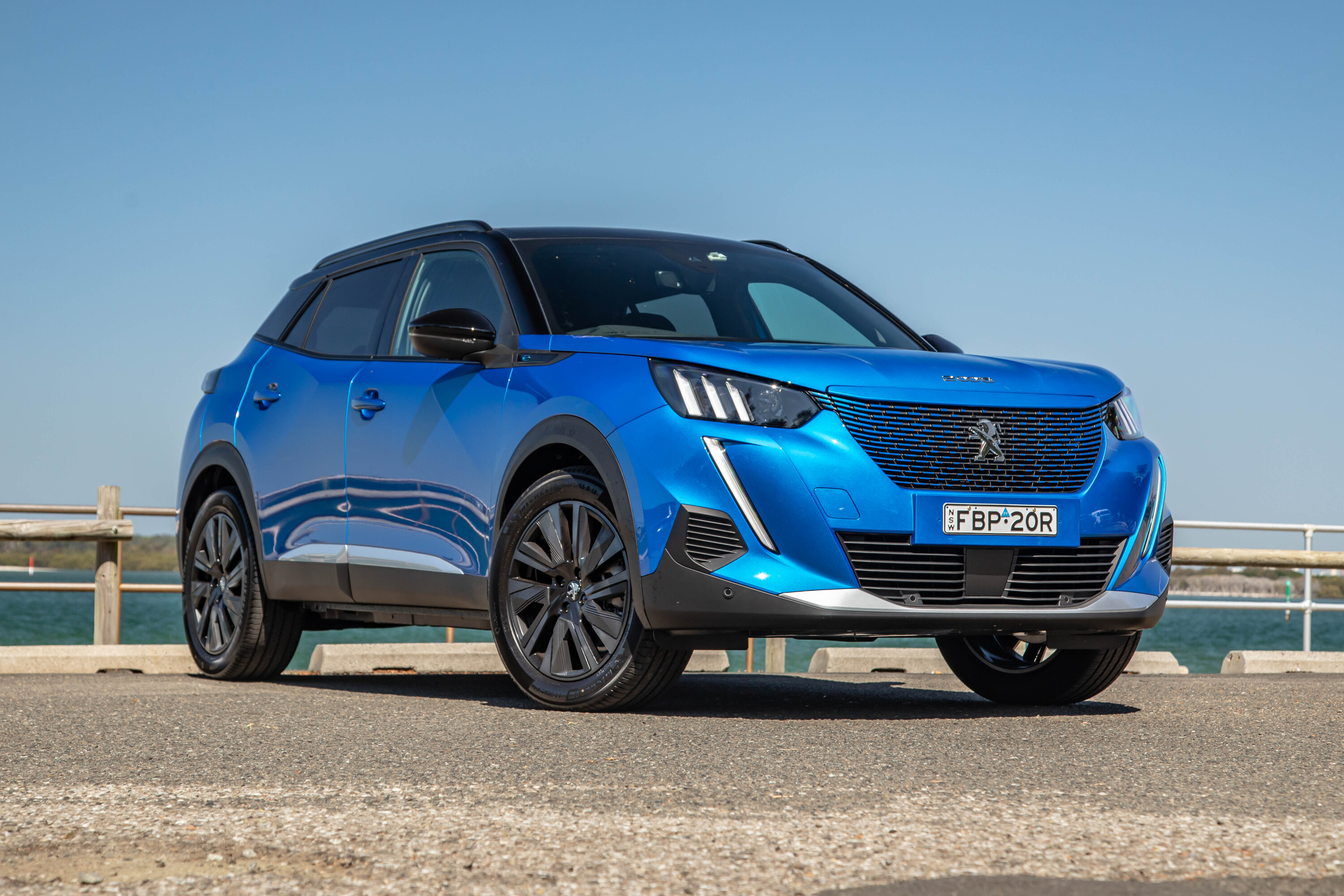
And again, it comes down to the price – Peugeot needs to sell a lot more cars to get the prices down but… yeah. Chicken and egg stuff that nobody wants to underwrite and I can understand why.
It’s a great pity the local importer couldn’t get a sharper price for this car because it could have been a contender.
Price aside, it is a contender for a good compact SUV meant for urban combat because it drives well and is comfortable. But with credible alternatives on either side of the $60K mark, this one is for the fans.
More EV stories to help you choose the best car for your needs
- ? EV news, reviews, advice & guides
- ❓ Short & sweet: Your EV questions answered
- ⚡ New EVs: Everything coming to Australia
- ? Australia’s EVs with the longest driving range
- ⚖️ Best-value EVs by driving range
- ? How much do EVs cost in Australia?
- ? How much more expensive are EVs?
- ⚖️ Number crunching: Is it time to switch to an EV?
- ♻ Should you buy a used EV?
- ?️ Are EVs more expensive to insure?
- ? Costs compared: Charging an EV vs fueling a car
- ? EV charging guide
- ? Are there enough EV chargers in Oz?
- ?? EV servicing explained
- ? EV battery types explained
- ? When do EV batteries need replacing?
- ? Hydrogen v EVs: What’s best for Oz?
- ✋? Mind your manners! EV charging etiquette tips
- ? How sustainable are EVs, really?
MORE advice stories to help you with buying and owning a car
| 2023 Peugeot E-2008 GT specifications | |
|---|---|
| Body | 5-door, 5-seat small SUV |
| Drive | front-wheel |
| Engine | synchronous electric motor |
| Transmission | single-speed reduction gear |
| Power | 100kW |
| Torque | 260Nm |
| Range | 328km (WLTP) |
| AC charging | 11kW |
| DC Charging | 100kW |
| 0-100km/h | 9.0 seconds |
| Energy consumption | 14.1kWh/100km (claimed) |
| Weight | 1548kg |
| Suspension | MacPherson struts front/torsion beams rear |
| L/W/H | 4300mm/1987mm/1550mm |
| Wheelbase | 2605mm |
| Tyres | 215/55 R18 |
| Wheels | 18-inch alloys |
| Price | $59,990 + on-road costs |
Score breakdown
Things we like
- Successfully feels like a Peugeot
- Great to drive
- Refined and quiet
Not so much
- Relatively high prrice
- Limited safety spec
- Dodgy reversing camera
We recommend
-
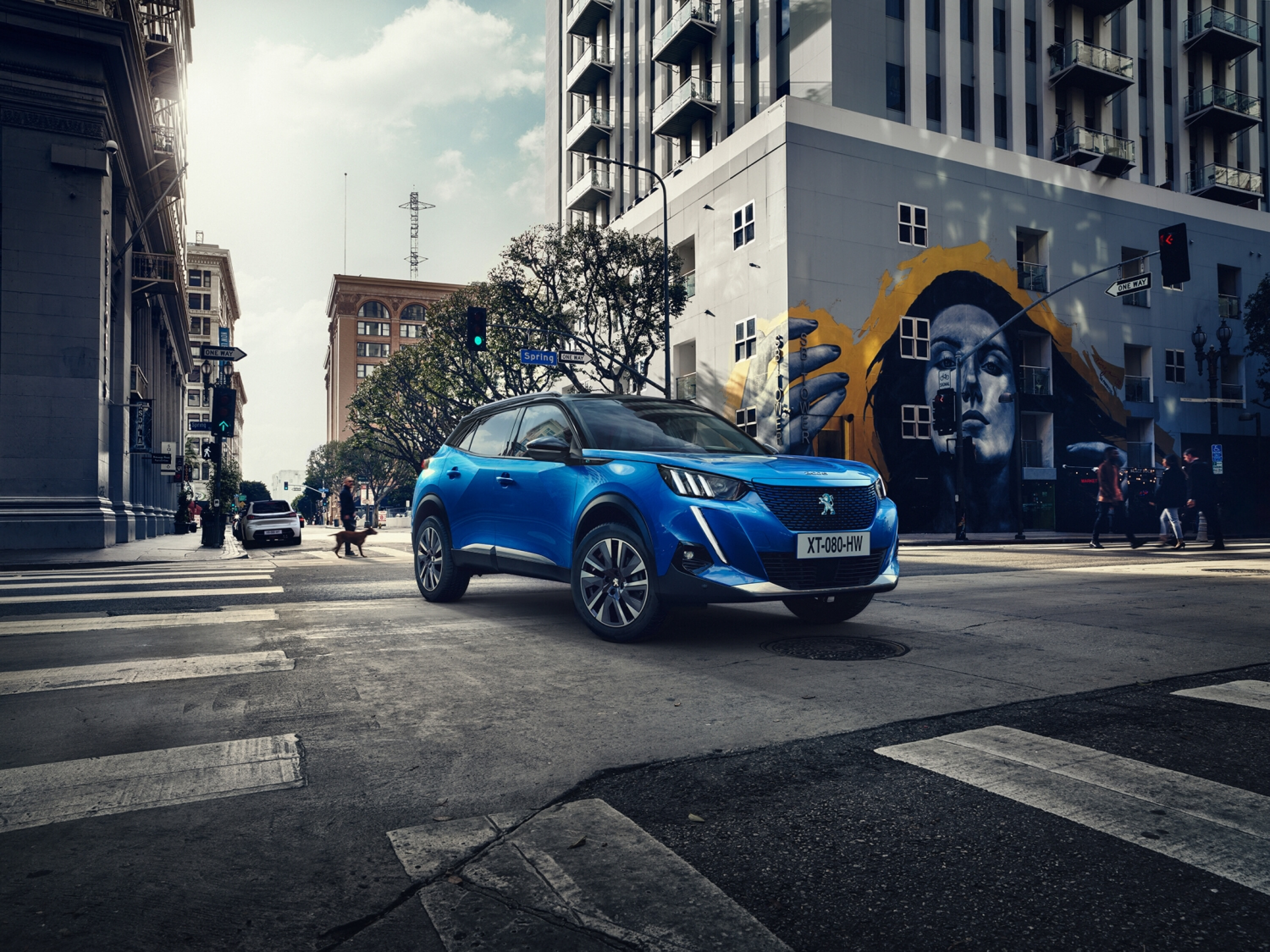 News
News2023 Peugeot E-2008 electric SUV pricing and features
Peugeot Australia has opened pre-orders for its first all-electric passenger vehicle ahead of its Q3 launch
-
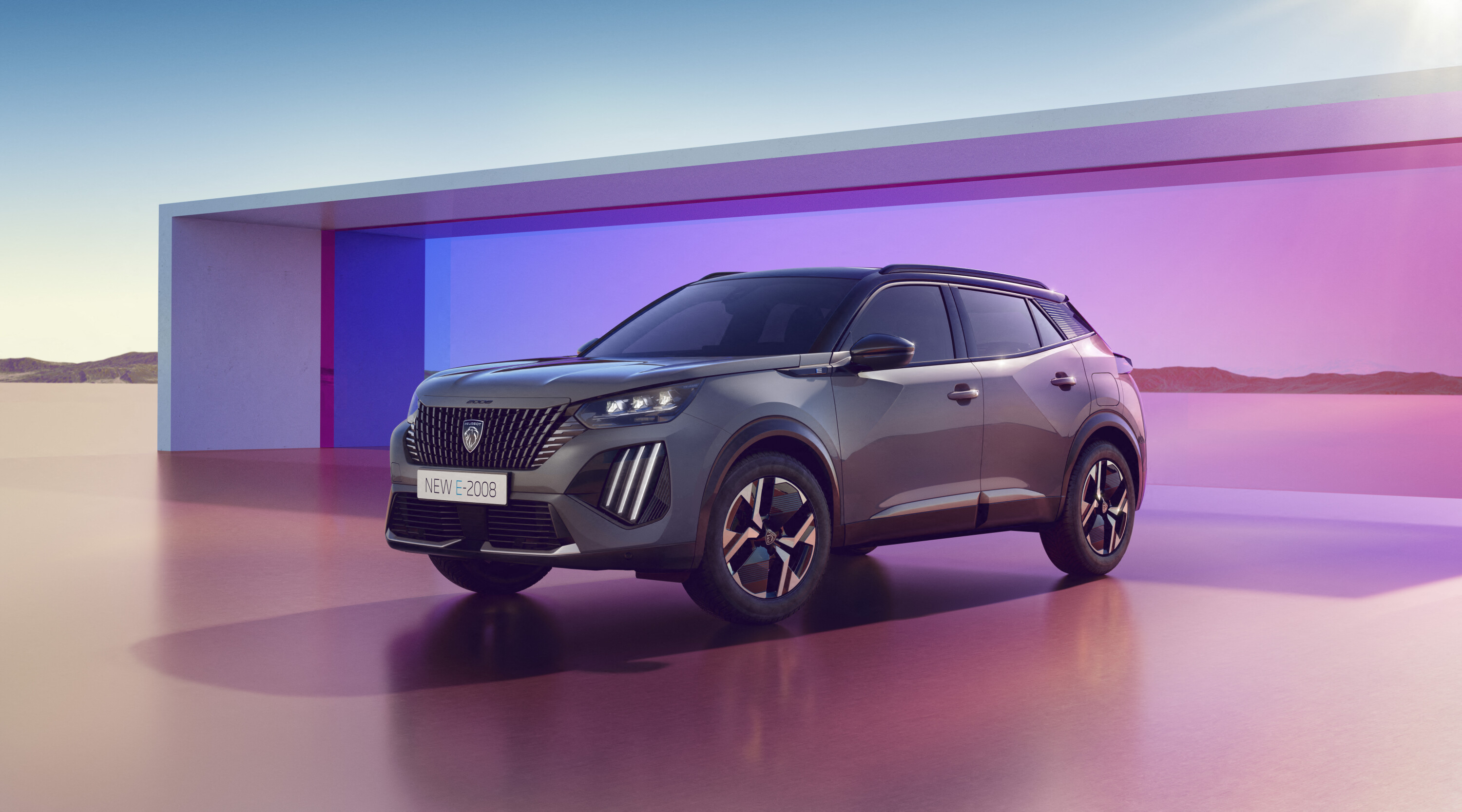 News
News2024 Peugeot E-2008: facelift revealed but Australia to continue with current model
First electric examples of the E-2008 are expected to arrive in Q3, but they won’t be the facelifted version…
-
 News
News2025 New Car Calendar: All the new cars coming to Australia
Take a look at our list of what is expected to launch in Australia in 2025 – plus those we might not see locally just yet





